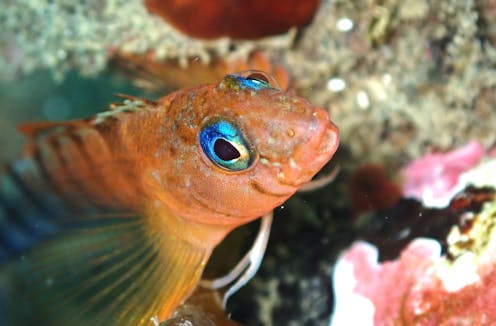
Environment + Energy – Articles, Analysis, Comment
Displaying 1 - 25 of 7417 articles

The common triplefin is helping marine scientists understand the negative effects of ‘skyglow’ on coastal fish, which are already more exposed to microplastics, chemicals and noise pollution.

Inconsistent laws and penalties for water theft in the Murray-Darling Basin make compliance and enforcement especially challenging. But it doesn’t have to be this way.

Young sharks are gathering at a popular beach. Here’s why we should skip our fear response and go for wonder – and protection

With submissions about to close on the government’s proposed fast-track consenting legislation, its possible impact on New Zealand’s diminished and delicate ecosystems demands proper scrutiny.

New research shows climate change can drive sudden ocean cooling too. This can have devastating effects on marine life such as bull sharks and manta rays.

For two years, Australia had a carbon price. Now we have a shadow price which won’t be paid by any emitter.

If a new declaration based on customary concepts of tikanga and mana is recognised by the courts, it could potentially give interest groups the legal standing to sue on behalf of whales.

Intense heat and no rain in southwest Western Australia are causing widespread tree and shrub die-offs.

Australia is expanding trade and investment with Southeast Asia to improve regional prosperity and global climate security. Here’s what to expect at the April 15-16 green economy summit in Vietnam.

Weather forecasting is improving at a great rate, even though climate change could be making it tougher.

Proper biodiversity conservation requires long-term commitments to protect areas of land and water, as laid down in international guidelines.

What harm can a road do? Plenty. Once built, illegal roads let loggers, miners, poachers and landgrabbers into the jungle, and the felling begins.

Heat is surging in the world’s oceans. Climate change and El Niño explain part of it – but not all.

South Australia stands out as having the weakest tree-protection laws, but cities around the nation are losing tree cover at a time when climate change makes them more important than ever.

In 1898, a pioneering Antarctic expedition was stuck in sea ice for over a year. In 2024, that area is open water.

Recent flash droughts in parts of NSW and Victoria appeared quickly and can be followed by intense flooding rains. It’s part of a global trend driven by global warming.

El Niño can direct more warm water to the base of West Antarctic ice shelves, accelerating melting and increasing global sea level.

Ocean warming seems the main driver of Antarctica’s sea-ice loss. But as satellites show, the change is not universal and sea ice persists in East Antarctica and the Weddell Sea.

New research suggests if we can’t eradicate cane toads, we can teach wildlife not to eat them.

When the soil ‘ceiling’ collapses, you end up with a hole exposing a cavity previously hidden underground.

A lack of human activity in the Southern Ocean is just one reason why the air is so clean. Clouds and rain play a vital role in scrubbing the atmosphere, removing natural airborne particles too.

You might be wondering: what is a ‘Black Nor'easter’, what’s causing all this rain and does it have anything to do with climate change? Here’s what you need to know.

The energy transition could be scuppered by community scepticism. Communities have to see the benefits.

Even with the best intentions, policies from different government departments can clash.

Geoengineering proposals to cool the ocean would indeed reduce ice loss from West Antarctica’s glaciers, but not enough to stop sea-level rise or allow the ice sheet to regrow.
